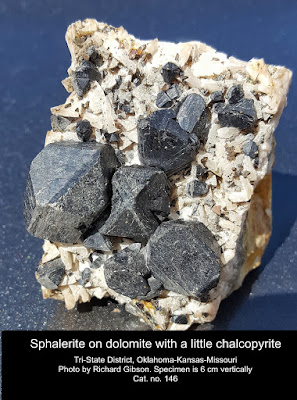2019 marks the sesquicentennial of Dmitri Mendeleev’s Periodic Table of the elements, which was not just an effective organizational scheme based on the atomic nature of the elements, but also a predictive tool regarding elements that had not yet been discovered in 1869.
The validity of the Table was proven in 1875. Mendeleev had predicted the existence of several elements, including one he called eka-aluminum. “Eka” is Sanskrit for “one,” thus meaning the unknown element would be one period down from aluminum. French chemist Paul Emile Lecoq de Boisbaudran identified a new element spectroscopically (as Mendeleev had foretold) in a sample of the mineral sphalerite (zinc sulfide). He named Element 31 gallium for his native France (Gallia in Latin) in 1875.
Mendeleev’s predictive table even allowed him to estimate properties of the unknown elements. When de Boisbaudran reported eka-aluminum/gallium’s density as 4.7 grams per cubic centimeter, Mendeleev suggested to him that he should recalculate it. When the new measurement was made, gallium’s density was found to be 5.9 g/cc, almost exactly as Mendeleev predicted several years earlier on theoretical grounds alone. Today the density of gallium is taken as 5.904 g/cc.
As described in my book What Things Are Made Of, gallium is used in tiny but critical amounts in solid-state semi-conductors in lots of high-tech devices, from computers and radios to cell phones and televisions. Gallium also finds its way into wireless technology infrastructure, integrated circuits, LED manufacture, and solar cells.
As it was when it was discovered, gallium today is found mostly in zinc and aluminum minerals and is produced by refining those ores, which are dominantly sphalerite for zinc and bauxite for aluminum. There’s typically only 50 parts per million or less gallium in such ores, but refineries can often separate it economically. In terms of crustal abundance, gallium is about the same as lead – but while lead easily forms common minerals that can be exploited economically, gallium’s properties mean that the few minerals it forms are extraordinarily rare. Instead, gallium gets incorporated into the structures of those zinc and aluminum compounds.
The United States is 100% dependent on imports for gallium, mainly from China (32%), United Kingdom (28%), Germany (15%) and Ukraine (14%). China is overwhelmingly the 600-pound-gorilla in terms of gallium, with more than 95% of total world production.
The sphalerite in this photo probably has some gallium in it, a few molecules at least, but I haven’t had it analyzed. The mineralization is hosted in limestones and cherty rocks of Mississippian age, deposited about 345 million years ago. The mineralization came in at some later time.
—Richard I. Gibson


No comments:
Post a Comment